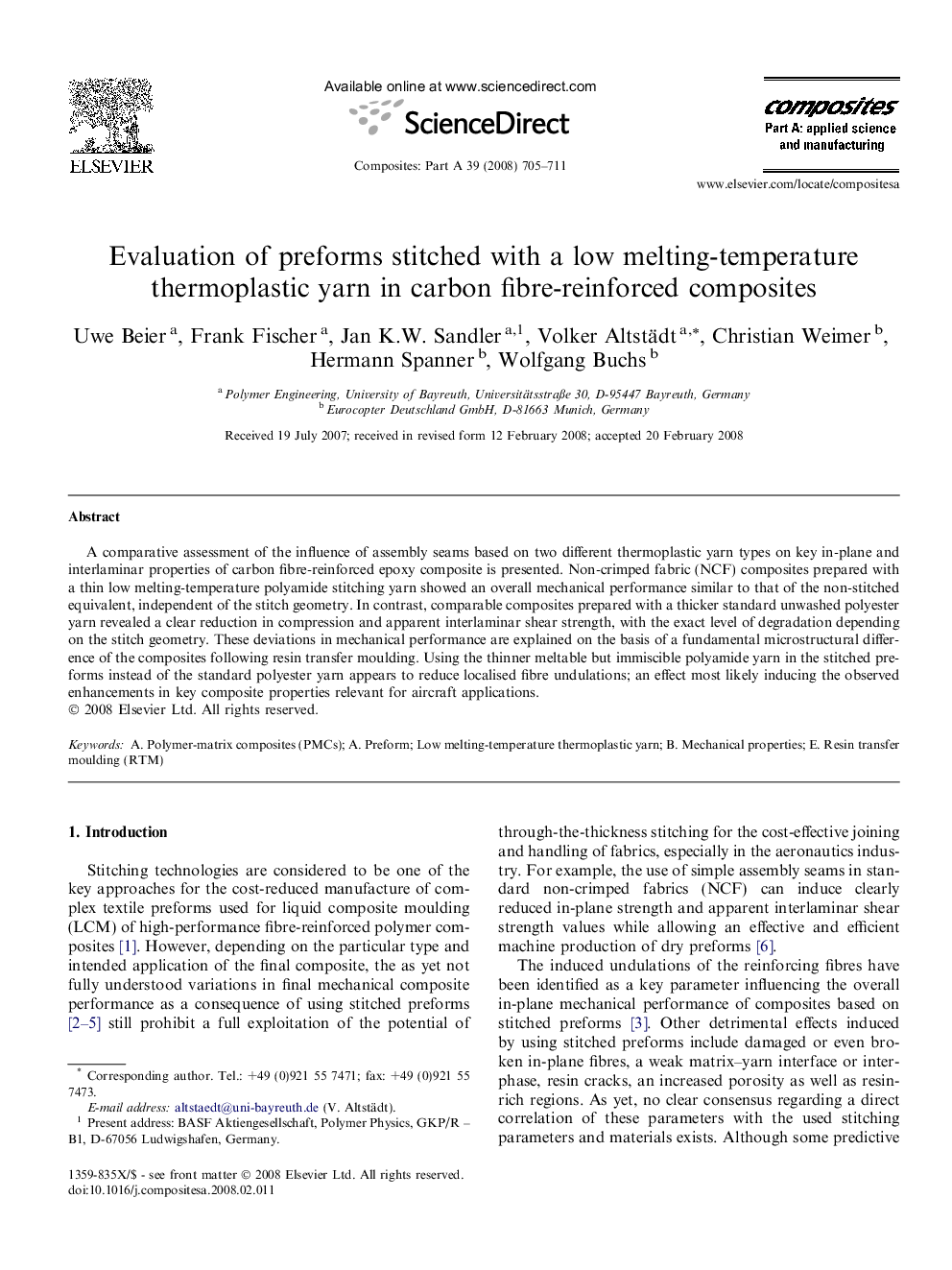| Article ID | Journal | Published Year | Pages | File Type |
|---|---|---|---|---|
| 1467733 | Composites Part A: Applied Science and Manufacturing | 2008 | 7 Pages |
A comparative assessment of the influence of assembly seams based on two different thermoplastic yarn types on key in-plane and interlaminar properties of carbon fibre-reinforced epoxy composite is presented. Non-crimped fabric (NCF) composites prepared with a thin low melting-temperature polyamide stitching yarn showed an overall mechanical performance similar to that of the non-stitched equivalent, independent of the stitch geometry. In contrast, comparable composites prepared with a thicker standard unwashed polyester yarn revealed a clear reduction in compression and apparent interlaminar shear strength, with the exact level of degradation depending on the stitch geometry. These deviations in mechanical performance are explained on the basis of a fundamental microstructural difference of the composites following resin transfer moulding. Using the thinner meltable but immiscible polyamide yarn in the stitched preforms instead of the standard polyester yarn appears to reduce localised fibre undulations; an effect most likely inducing the observed enhancements in key composite properties relevant for aircraft applications.
